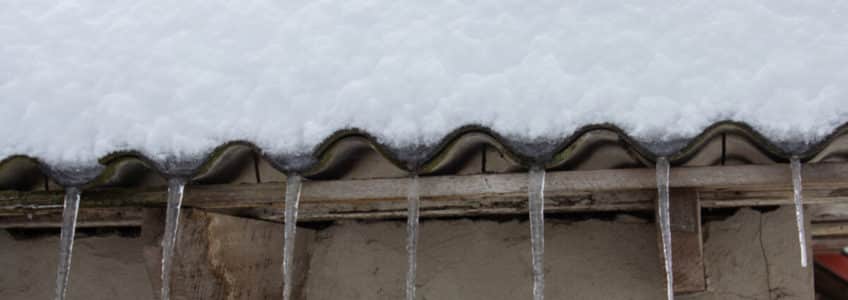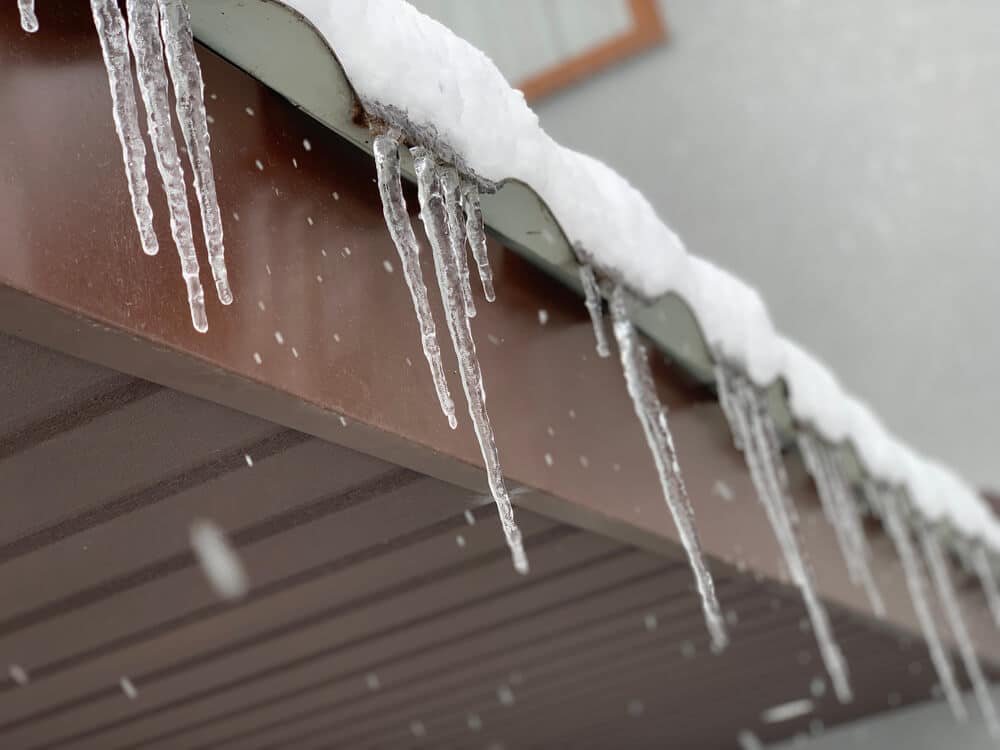
Icicles hanging from your roof may look picturesque, but they can cause serious damage to your home. From overloaded gutters to the risk of injury, icicles present more than just a winter inconvenience. Understanding how to prevent icicles on gutters and roofs is crucial for protecting your home during the colder months. Fortunately, with a few simple steps, you can avoid the formation of these dangerous ice formations and keep your home safe.
What Causes Icicles to Form?
Before diving into the prevention methods, it’s important to understand what leads to icicles in the first place. Icicles typically form when snow on the roof melts due to heat escaping from inside the home. The melted snow runs down the roof and refreezes when it reaches the cold edge of the gutter. This creates a cycle where more water runs down and freezes, eventually forming large, heavy icicles.
Common Factors That Contribute to Icicle Formation
- Inadequate insulation: Heat escaping from your home melts snow unevenly, leading to runoff that refreezes.
- Poor roof ventilation: Without proper ventilation, heat builds up in the attic, accelerating the melting process.
- Clogged gutters: Debris in the gutters traps water, creating an ideal environment for icicles to form.
The Dangers of Icicles
While icicles may look harmless, they can cause significant damage. As they grow, icicles can weigh down gutters, increasing the risk of gutter failure. Additionally, the accumulation of ice on the roof can lead to ice dams, which can cause water to back up under shingles and into your home. Lastly, falling icicles can be hazardous to anyone passing by, posing a real safety concern.
How to Prevent Icicles on Gutters and Roofs
Preventing icicles is easier when you take a proactive approach. Below are some effective ways to stop icicles from forming in the first place.
Improve Attic Insulation and Ventilation
One of the most effective strategies for preventing icicles on gutters and roofs is to reduce the amount of heat escaping from your attic. Proper insulation helps keep warm air inside the house, reducing the uneven melting of snow on your roof.
- Check your attic insulation: Make sure your attic has enough insulation to prevent heat loss. A properly insulated attic keeps the temperature of your roof more consistent, reducing the likelihood of ice formation.
- Install roof ventilation: Good ventilation allows warm air to escape from the attic before it can heat the roof. Ridge vents, soffit vents, and gable vents are all good options for improving airflow in your attic space.
Clean Your Gutters Regularly
Clogged gutters contribute to icicle formation by trapping water, which can freeze and cause blockages. Keeping your gutters clean helps prevent the buildup of debris that can lead to ice formation.
- Clear leaves and debris: Before the first snowfall, ensure your gutters are free of leaves, sticks, and other debris.
- Install gutter guards: Consider installing guards to keep larger debris out while still allowing water to flow freely through the system.
Add Heating Cables to Your Roof
Heating cables, also known as heat tape, can be installed along the edge of your roof and inside your gutters to keep snowmelt from refreezing. These cables provide gentle warmth, ensuring that any water flowing off your roof remains liquid and drains properly.
- Install in high-risk areas: Focus on areas where icicles are most likely to form, such as the edges of your roof, near gutters, and valleys where snow tends to accumulate.
- Use energy-efficient cables: Many modern heating cables are designed to be energy-efficient, turning on only when temperatures drop below freezing.
Preventing Ice Dams Along with Icicles
Ice dams are thick ridges of ice that build up along the edge of the roof, preventing melting snow from draining properly. Like icicles, ice dams form when the roof temperature is uneven. Preventing ice dams goes hand in hand with preventing icicles.
Additional Steps for Ice Dam Prevention
- Seal attic leaks: Any air leaks from your living space into the attic can raise the attic’s temperature and contribute to ice dams. Seal any gaps around recessed lighting, chimneys, and attic access doors.
- Use a roof rake: After heavy snowfall, use a roof rake to remove snow from the roof, particularly near the edges. This can help reduce the amount of snow that melts and refreezes.
Maintaining Your Roof in Winter
Regular maintenance is key to preventing icicles on gutters and roofs. By taking care of your home’s exterior, you can prevent not only icicles but other winter-related damage.
- Schedule a roof inspection: Have a professional inspect your roof before winter to ensure it’s in good condition. Fixing any minor issues before the cold sets in can prevent more significant problems down the line.
- Check attic conditions: Make sure your attic is properly insulated and ventilated to stop heat from escaping.
- Clear gutters and downspouts: Ensure that water can drain away from your home without freezing.
Conclusion
 Preventing icicles on your gutters and roof is essential for protecting your home from winter damage. By addressing insulation, ventilation, and proper gutter maintenance, you can avoid the formation of dangerous ice formations. If you’re unsure about the condition of your roof or need help with winter preparation, contact Advantage Construction today for expert guidance and services.
Preventing icicles on your gutters and roof is essential for protecting your home from winter damage. By addressing insulation, ventilation, and proper gutter maintenance, you can avoid the formation of dangerous ice formations. If you’re unsure about the condition of your roof or need help with winter preparation, contact Advantage Construction today for expert guidance and services.
